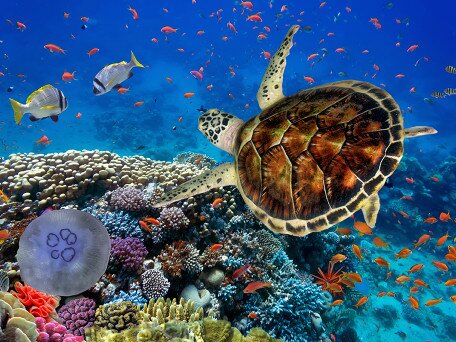Emerging organic flame retardants in marine wildlife
- 项目计划:
- 优配研究金
- 项目年份:
- 2019/2020
- 项目负责人:
- 林忠华博士
- (科学与环境学系)

The overall aim of this study is consequently to identify and quantify known, and emerging OFRs, in different marine wildlife and to evaluate the relative proportions of these in the target species for exposure assessments of OFRs in Hong Kong marine organisms.
Organic flame retardants (OFRs) have been used in myriad applications to reduce fire hazards. Reports of increasing levels of OFRs in human and wildlife tissues from the 1980s onwards and the publication of studies demonstrating the toxicity of these chemicals to vertebrates prompted regulation in various countries of the use of polybrominated diphenyl ethers (PBDEs) and hexabromocyclododecanes (HBCDs). The phase-out of these two most well-known OFRs is expected to reduce the world market demand for these compounds, but other emerging OFRs must consequently take their place in product manufacturing. A few candidates for this purpose such as decabromodiphenylethane (DBDPE), 1,2-dibromo-4-(1,2-ibromoethyl)cyclohexane (TBECH) and organophosphate esters (OPEs), have been reported in a wide range of environmental samples at levels comparable to those of the widespread PBDEs and HBCDs. A recent monitoring program on local cetaceans reveals that the levels of conventional persistent organic pollutants (POPs) including DDTs and PCBs were still the most predominant in blubber samples. However, these were closely followed by PBDEs and HBCDs, which are OFRs more recently added to the POPs list, suggesting the coastal area of Hong Kong and the Pearl River estuary is significantly contaminated by these persistent and toxic substances. Although PBDEs and HBCDs have been measured in Hong Kong and China, there is a lack of comparable data about alternatives for these banned chemicals, prompting our group to start monitoring these emerging chemicals in south China. The results indicated relatively high concentrations of DBDPE and Dechlorane Plus (DP) in local cetaceans. Additionally, significantly increasing temporal shifting trends of banned OFRs to their corresponding replacements were observed in blubber samples over the past decade. This indicates the increasing use of newer and re-emerging OFRs since the restriction of the production and use of PBDEs and HBCDs, and raises the possibility that other emerging OFRs are also present in local marine wildlife. It is therefore imperative to investigate novel and understudied OFRs in the local environment, particularly in cetaceans, sea turtles and corals that have great conservation value, in order to increase the reliability and integrity of the overall assessment of OFRs in the environment. The overall aim of this study is consequently to identify and quantify known, and emerging OFRs, in different marine wildlife and to evaluate the relative proportions of these in the target species for exposure assessments of OFRs in Hong Kong marine organisms.








